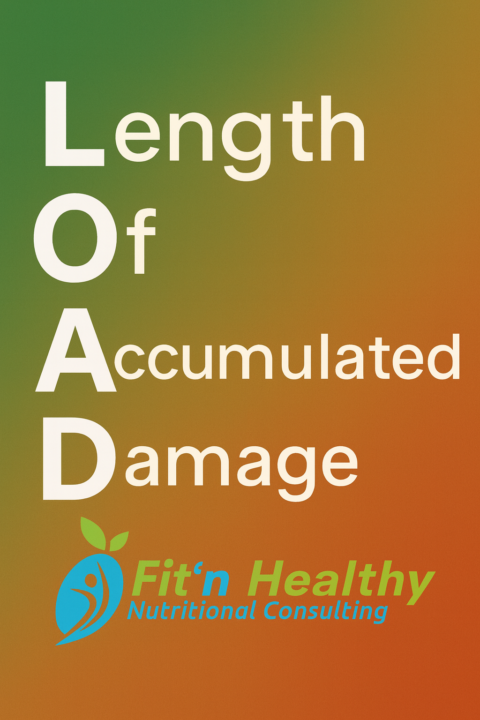Activity
Mon
Wed
Fri
Sun
Jan
Feb
Mar
Apr
May
Jun
Jul
Aug
Sep
Oct
Nov
Dec
What is this?
Less
More
Memberships
Fit 'n Healthy Forever
635 members • Free
DB
Dream Builders
14 members • Free
66 contributions to Fit 'n Healthy Forever
Sugar Has Many Faces — And None Of Them Are Pretty
Here’s a fairly comprehensive list of body parts/organs where sugar shows up as disease or dysfunction. Sometimes we look at the following as "inevitable' or just signs of "getting older" - Aging. Most often it's the accumulated build up of Toxins - including Sugar. In most cases each of these leads to medications, surgery or some kind of invasive intervention. Head to Toe Effects of Sugar (there's more - these are the biggies) - Mouth/Teeth → Cavities & Gum Disease. - Sugar feeds harmful bacteria, leading to decay, infection, and even tooth loss. - Skin → Acne, Aging, Wrinkles - Spikes oil production, breaks down collagen, and accelerates visible aging. - Brain → ADHD, Anxiety, Alzheimer’s (“Type 3 Diabetes”) - Causes energy crashes, mood swings, poor focus, and long-term memory decline. - Eyes → Cataracts, Glaucoma, Retinopathy, - High blood sugar damages tiny vessels and eye proteins → vision loss. - Pancreas → Diabetes. - Overwork and burnout of insulin production leads to high blood sugar and organ damage. - Heart & Blood Vessels → - Heart Disease & High Blood PressureSugar inflames arteries, raises triglycerides, and stiffens blood vessels. - Liver → Fatty Liver Disease (Non-Alcoholic) - Excess fructose gets stored as fat → leading to liver scarring. - Kidneys → Kidney Disease - Sugar damages delicate filters → toxins build up in the body. - Gut → Dysbiosis, IBS, Leaky Gut - Feeds harmful bacteria/yeast → bloating, cravings, poor nutrient absorption. - Immune System → Weakened Defense - Sugar suppresses white blood cells, making it harder to fight infections. - Joints → Arthritis & Inflammation - Sugar triggers inflammatory pathways → more pain and stiffness. - Reproductive Hormones → PCOS, Infertility, Low Testosterone - Sugar disrupts insulin and hormone balance → affecting fertility and libido. - Sleep → Insomnia & Restless Nights - Blood sugar crashes wake you up and block deep sleep.

I scream for FitnHealthy Ice-Cream!
Base Formula - Protein source (1–2 scoops protein powder):Whey, casein, collagen, or a mix. Casein or whey/casein blends give a creamier texture than whey alone. Whey Isolate has higher protein content per scoop. - Creamy fat source (1 cup):Options: Organic - full-fat Greek yogurt, cottage cheese (blended smooth), full fat coconut cream, or heavy cream. - Frozen fruit or low-carb base (1–2 cups):Frozen bananas (sweeter, softer texture), or frozen berries for lower sugar. - Organic A-2 Milk or unsweetened nut milk (½–1 cup, as needed):Use just enough to blend without making it runny. Whole A-2 milk or full fat coconut milk makes it creamier. Optional Boosters - Nut butter (1–2 Tbsp) → adds healthy fats & richness. Organic Almond butter - Pistachio butter makes it green. - Egg yolks (2–3, → traditional custard-style, boosts protein & fat. - Collagen peptides → dissolves easily, adds protein without taste. - Cacao powder, vanilla extract, cinnamon → for flavor. - Stevia, monk fruit, or dates → if extra sweetness is needed. - Chia or flax seeds → for fiber & omega-3s, but they slightly change texture. Blending & Freezing 1. Blend all ingredients until smooth and creamy. 2.Either eat immediately as “soft serve” OR transfer to a non plastic or non waxed container and freeze for 2–3 hours. Stir every 30 minutes for smoother texture (or use an ice cream maker if you have one). 3.Let it sit on the counter for ~10 minutes before scooping if it firms up too much. Sample Recipe: Chocolate Almond Butter Protein Ice Cream - 1 scoop chocolate casein/whey protein, isolate has higher Protein - ¾ cup full-fat Organic Greek yogurt - 1 Tbsp natural organic Almond butter - 1 Tbsp cocoa powder - 1 frozen banana - ½ cup whole milk (add slowly until blendable) - Pinch of salt, splash of vanilla extract - Optional: dark chocolate chips or cacao nibs mixed in Macros (approx., depending on protein powder & milk choice):

Supplements & Natural Agents for GLP-1 Support - Pt - 4 of 8
Supplements and foods work naturally & don’t act like exactly semaglutide or tirzepatide, however they can still - - stimulate natural GLP-1 secretion, - improve receptor sensitivity, - slow carbohydrate absorption (which indirectly raises GLP-1 signaling) Overall Ranking (Most to Least Effective for GLP-1) These do have DIFFERENT Health Benefits for Fat Loss, Blood Sugar Control & Metabolism OTHER than just affecting GLP-1. So they are in order of GLP-1 activity specifically - 1. Resistant Starches (foods: green bananas, cooked & cooled potatoes/rice, legumes, oats). More on this in future posts. - Mechanism: Fermented by gut bacteria → produces SCFAs (butyrate, propionate) → stimulates GLP-1 release. - Effectiveness: Strong human evidence; one of the best natural ways to raise GLP-1. 2.Akkermansia muciniphila (Akkermansia-specific probiotics or prebiotics that feed it) - More on this in future posts. - Mechanism: This gut microbe strengthens the gut barrier and produces metabolites that enhance GLP-1 and improve insulin sensitivity. - Effectiveness: Human clinical data emerging — promising for obesity, diabetes, metabolic health. 3.Berberine - Mechanism: Activates AMPK, improves insulin sensitivity, slows carb absorption, and may increase GLP-1 secretion. - Effectiveness: Comparable in some studies to metformin; strong indirect GLP-1 support. 4.Yerba Mate - Mechanism: Polyphenols stimulate GLP-1 secretion, improve satiety, and slow gastric emptying. - Effectiveness: Good human evidence for appetite control and GLP-1 rise. 5.Cinnamon - Mechanism: Improves insulin sensitivity, slows gastric emptying, modestly enhances GLP-1 release. - Effectiveness: Moderate; useful adjunct for blood sugar and appetite. 6. Apple Cider Vinegar - Mechanism: Slows gastric emptying, blunts post-meal glucose spikes → indirectly boosts GLP-1. 7. Turmeric (Curcumin) - Mechanism: Anti-inflammatory; may modulate gut microbiota and L-cell signaling to promote GLP-1.
Poll
8 members have voted

Non-Toxic Kitchen Swaps Guide
Parchment Paper Most people don’t realize that common parchment paper is coated with chemicals like Quilon (a chromium compound) or processed with chlorine bleach. When heated, these can release toxins into your food. Instead, choose unbleached parchment paper coated with food-grade silicone, like If You Care, Beyond Gourmet, or PaperChef. These are free of chlorine, Quilon, and toxic fumes — and they still offer that non-stick convenience. You can also use silicone baking mats like Silpat as a reusable, long-term solution. Avoid using wax paper in the oven — it melts and releases harmful substances. And skip aluminum foil, especially when cooking acidic foods. Cookware If you're still using non-stick pans, even “green” ones, chances are they contain PFAS or other forever chemicals that can leach into your food when scratched or heated. Instead, use cast iron (great for high heat), enameled cast iron (like Le Creuset), stainless steel, pure ceramic, or glass cookware. These materials don’t release toxins and often last a lifetime. Avoid aluminum pans, especially if uncoated, and be cautious with any non-stick surface unless you’ve verified it's 100% PFAS-free and third-party tested. Utensils Plastic spatulas and spoons may seem harmless, but when they come into contact with hot food or hot pans, they can leach plasticizers, BPA, BPS, or phthalates. Over time, they break down — and you don’t want that in your soup. Think "hormone disruption" Instead, reach for natural wood utensils (like bamboo or beech), stainless steel tools, or LFGB-certified silicone spatulas, which are heat-safe and food-grade. Avoid anything rubbery or plastic that starts melting or warping — if it’s deforming, it’s releasing toxins. Food Storage Old Tupperware, stained plastic containers, and cling wrap are common culprits of chemical exposure — especially when microwaved or used for hot food. These can leach endocrine (hormone) disruptors directly into your meals. The cleanest alternatives are glass containers with lids, mason jars, silicone food bags (like Stasher), and beeswax wraps for covering leftovers or wrapping snacks.
“Diseases of Aging” - is it all about the L.O.A.D.?
We’ve been told diseases like dementia, diabetes, heart disease, arthritis, and cancer are just “part of getting old.”But in reality? It’s not age itself — it’s the accumulation of toxins over time. It's the L.O.A.D. - Length Of Accumulated Damage Let’s walk through the decades. 20s–30s → Resilient Years - Body compensates easily. - Early whispers: fatigue, bloating, acne, headaches. - Most brush it off as “normal” or just stress. 40s–50s → Breakdown Years - Warning lights start flashing. - High blood pressure, thyroid struggles, weight gain, poor sleep. - Doctors say, “It’s just age” — but it’s years of toxic stacking showing up. 60s → The Chronic Phase - Accumulated stress + toxicity now labeled as “conditions.” - Common diagnoses: Type 2 diabetes, arthritis, cardiovascular disease. - Medications often increase (statins, blood pressure meds, metformin). - Many still believe this is “inevitable aging.” 70s → The Decline Phase - Energy, muscle, and resilience shrink faster if toxins keep piling. - Dementia, Parkinson’s, strokes more common. - Polypharmacy (5–10 meds daily) becomes the “norm.” - What looks like “old age frailty” is actually toxic burden + nutrient depletion. 80s → The Dependency Phase - Independence is often lost. - Nursing home care, walkers, wheelchairs. - Organs overburdened → kidneys, liver, heart struggle most. - High inflammation and oxidative stress dominate. 90s → The Extreme Phase - Those who reach 90 often do so with either - 1. Exceptional health habits that reduced toxic stacking, so they are Healthy and mobile. OR 2.High toxic burden with significant frailty, dementia, or immobility. At this age it’s the MOST obvious - people who minimized toxins vs. those who didn’t live completely different realities. Here's a FitnHealthy Forever Truth - Aging doesn’t cause disease. ✅ Toxic accumulation does. ✅ Every decade is like a “toxic bank account.” What you deposit (pesticides, plastics, stress, processed food, poor sleep) or withdraw (detox practices, clean eating, movement, sunshine) determines the quality of your later years.

1-10 of 66
@poppy-psyllakis-1552
My name is Poppy and I live in Duncan on Vancouver Island. I have passion for horses and dogs and work FT as a dog trainer. Love an active lifestyle!
Active 9d ago
Joined Nov 7, 2024
Powered by


